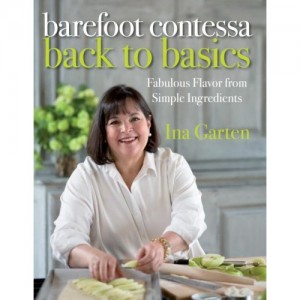I’m fairly certain that over the course of my illustrious career, I’ve written, read, and laughed at at least one hundred papers that began with “Demystifying the East” and ended with bullshit. Misery loves company, so here’s one on cookery.
I was craving Asian food something fierce last night, and came across this recipe for lettuce wraps, the kind one might drop thirteen buckeroos on at PF Chang’s, at the Food Network website. While I greatly enjoy the combo of hot, intensely-flavored meat against the refreshing, crispy texture of a lettuce leaf I’m not very inclined to sell a kidney for it, especially when most Asian food can be created (or rather, most food can be made to taste Asian) at home for pennies, as long as you know the flavor profiles. Easy-peasy, right?
Apparently not so for Sunny Anderson, who created the aforementioned lettuce wrap recipe above. It was at once heavy (from the beef) and way too spicy; the sheer amount of heat from the garlic and red pepper flakes overpowered the sweetness of the hoisin, which should have been providing a foil against the saltiness of the soy and peanuts. Inedible? No, it was decent (I polished off leftovers for lunch), but I am an Asian food snob of the highest degree and this meal was definitely not a star (I’ve adapted Sunny’s recipe to be better; check it out here).
After dinner, I found myself asking the little voices in my head, “Do Americans really not know how to do light, tasty Asian?”
They don’t, really. So let me teach you.
Behold the Japanese Holy Trinity of Flavor: soy sauce, mirin, and sake. With these three tools, you can make anything taste deliciously light and Asian with minimal effort. Let’s take a moment and think about each in turn.
Soy Sauce. It’s the hooker of Asian cuisine; it’s cheap, gets you off in a hurry, and you can find it anywhere. Total bang for your buck. The pungency comes from the fermented soy beans used to make it, and the high levels of salt added to it during its creation make it a great base flavor to any dish, Asian or not. This is where that new-fangled Japanese loanword “umami” comes in.
Lots of people get ‘low-sodium soy sauce,’ and these people need to be punched in the face. Soy sauce is meant to be salty; it is salt for all intents and purposes. If you’re using it in cooking, don’t add salt. If you’re using it on the side, don’t drink the bottle. If you’re worried about your sodium intake, stop eating so many goddamned processed foods.
A final note on soy: buy Japanese, such as Kikkoman. Chinese soy sauce is cheaper, but so is the flavor.
Mirin. Ah, lovely, lovely mirin. Mirin is a rice wine that has been sweetened with sugar (a great, great deal of sugar), which produces a velvety, almost syrupy consistency. When you combine mirin and soy sauce with some sugar, you get teriyaki sauce (yes, it’s that easy).
Mirin comes in several forms nowadays; the two I use are “real” (hon) mirin, which is alcoholic, or “mirin-fu chomiryo” (みりん風調味料), which is actually pictured above. The latter means “mirin-styled seasoning,” and this is because it tastes like mirin, but doesn’t have any alcohol. Both are acceptable to use, and since I often add sake to my dishes anyway, I don’t miss the alcohol when using the fake stuff.
Sake. You should all be pretty familiar with sake; it’s Japanese rice wine. I buy cooking rice wine, though you could always substitute nicer sake if you have it to hand. This gives any dish some earthy, astringent notes that beautifully mellows out the sweetness of mirin and the saltiness of soy. It brings balance to the trinity. (I sound like I’m doing a tarot card reading.) I like to finish off stir-fries and sautes with sake, adding it at the end and letting it cook out for thirty seconds to a minute.
—-
So now you know the basics. But what do you do with them? Try these:
Teriyaki Sauce
3 tbsp soy sauce
3 tbsp mirin
3 tbsp sake
3 tbsp sugar
Whisk together. You’ve got teriyaki sauce. Cook anything you want in a pan — meatballs, burgers, chicken breast, fish, tofu, etc. When cooked, remove said meat, pour in the sauce and reduce over high heat until it’s thickened nicely. Return meat to the pan, until the goods are thoroughly coated and glossy (do not burn the glaze). Voila.
Basic Soy Broth
2 cups dashi (Japanese fish or seaweed stock; I use instant)
2 tbsp soy sauce
1 tbsp mirin
1 tbsp sake
Combine ingredients and heat it up. Can be used to simmer chicken meatballs or poach fish, or as a broth base for ramen.
Japanese Omelet
2 eggs
1 tsp soy sauce
1 tsp mirin
Whisk together and make cook the eggs into an omelet however you fancy. You’ll have a lightly sweetened, delicious Japanese egg dish.
—-
So there are three super-quick recipes that create authentic Japanese results. If you just feel like experimenting, play with one or a combination of the flavors at different ratios. I add soy sauce to pasta sauces and chilis, use mirin in salad dressings, and deglaze with cooking sake instead of white wine.



